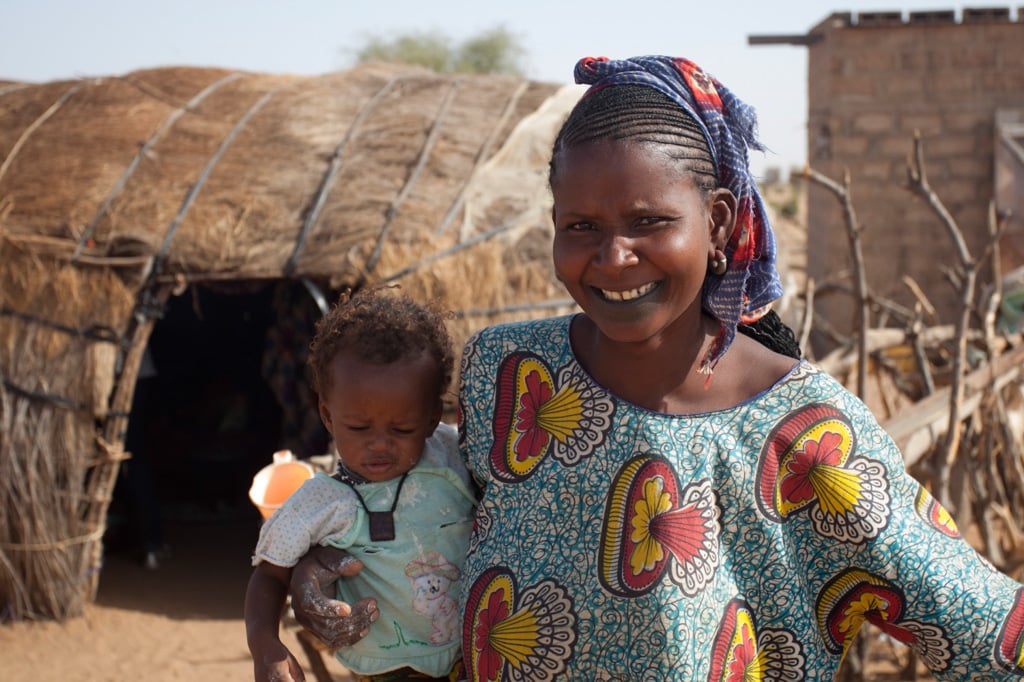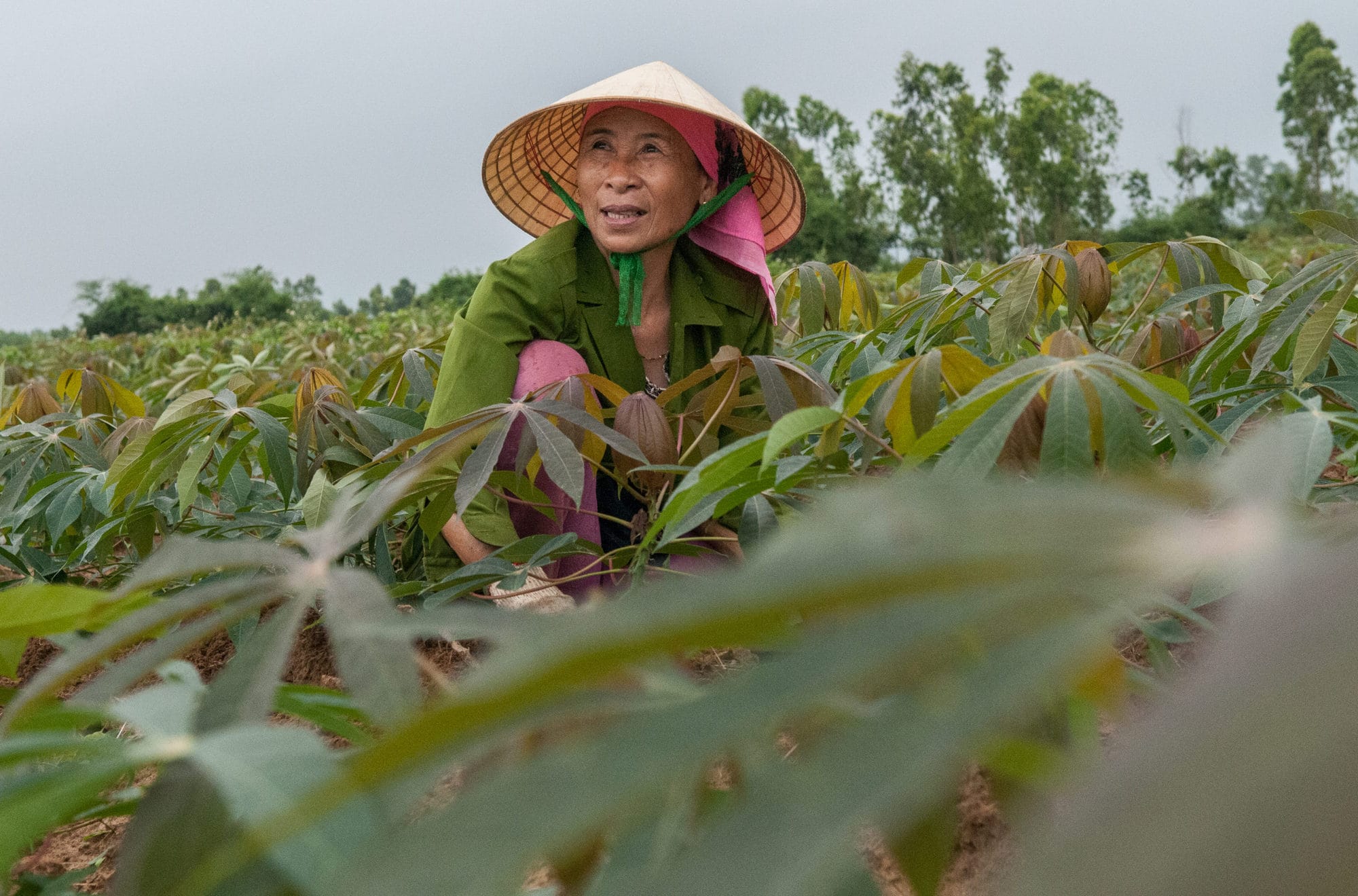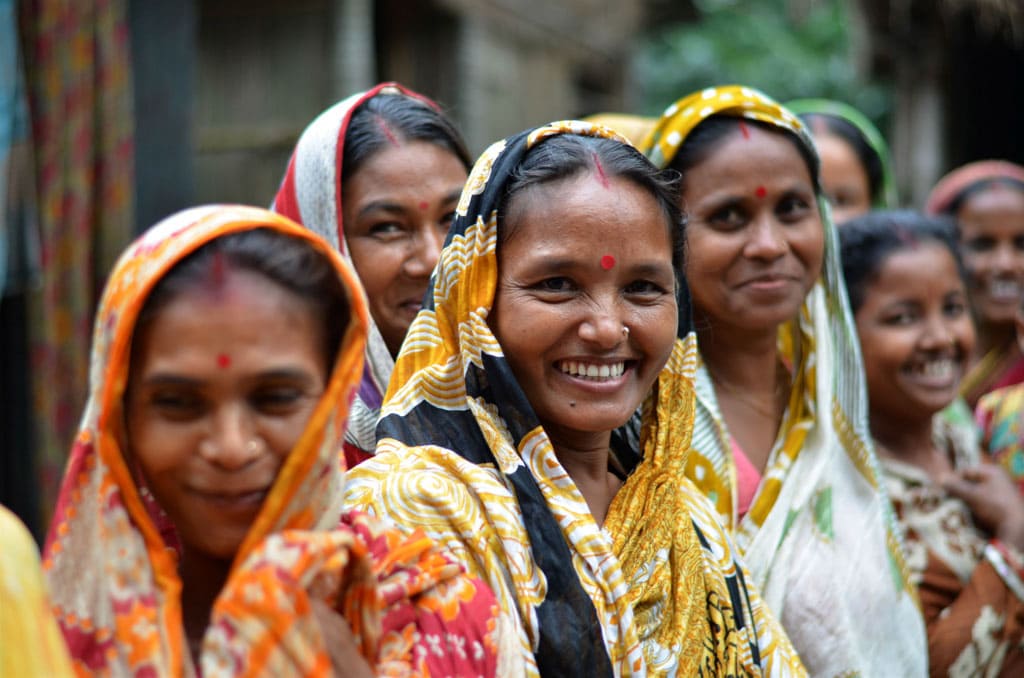The world is producing more food than ever.
BACK TO TOP


Innovations for nutrition and growth
Looking back on 50 years of research to support safe, sustainable and healthy food for people and the planet.
But for millions of people, sustainable, healthy diets are still out of reach.
How can we end poverty and hunger in all forms and survive the climate crisis together?
It all starts with research and innovation to transform our food, land and water systems.

50 years of innovations for nutrition and growth
For 50 years, CGIAR and partners have produced world-changing research and innovations that have ended hunger and poverty for hundreds of millions of people. Our scientific advances have helped produce more food than ever for a growing global population. But in the face of 21st century challenges, there is still much work to be done.
The climate crisis poses challenges for more sustainable and resilient food systems that can withstand environmental shocks and stresses, while reducing emissions, protecting biodiversity and keeping resource use within planetary boundaries. Malnutrition, stunting and wasting, and a rise in diet-related issues like obesity, heart disease and other diet-related conditions point to a need for more equal, healthy food systems that can provide nutritious and affordable diets for all. And the COVID-19 pandemic highlights the importance of creating safe food systems that limit the spread of zoonoses, while caring for plant, animal, human and ecosystem health.
Ahead of the Nutrition for Growth Summit this month, explore a selection of CGIAR innovations for safe, healthy and sustainable food systems.
CGIAR @ N4G Summit 2021
Nutrition for Growth (N4G) is a global effort to bring together country governments, donors and philanthropies, businesses, NGOs and beyond. The N4G Year of Action is a rare opportunity to accelerate progress on malnutrition, beginning with a successful virtual launch hosted by the Governments of Canada and Bangladesh in December 2020.
CGIAR, the world’s largest agricultural research and innovation network, is a vital knowledge and science partner for nutrition action in food, land and water systems. Building on over half a century of scientific excellence and global partnerships, CGIAR’s new strategy and portfolio puts ending hunger and enabling access to safe, affordable, nutritious and healthy diets for all and the creation of sustainable food systems at the heart of agricultural research and innovation for development.
Follow our involvement at the N4G Summit.
#OneCGIAR #CGIAR4Nutrition
Stories to end malnutrition

Beyond evidence on what constitutes good nutrition, many nutrition policymakers and leaders have voiced demand for evidence on how to successfully tackle malnutrition and improve nutrition outcomes.
This was the rationale for the Stories of Change initiative, led by CGIAR researchers at the International Food Policy Research Institute (IFPRI) and the Transform Nutrition research program consortium from 2015: to draw real-life lessons from the successes of policymakers, nutrition leaders, program managers and other decision-makers in combating undernutrition in different settings.
Drawing initially upon six case studies of countries or territories that had experienced significant success in driving down rates of child stunting – Bangladesh, Nepal, the state of Odisha in India, Ethiopia, Senegal, and Zambia – Stories of Change has since shed light on the drivers and pathways of nutrition-relevant change, with a particular focus on the determinants of political commitment, policy and program coherence, and effective implementation of nutrition-relevant actions.
By 2020, a total of 18 case studies had been developed, with more to follow. The findings have been drawn on by national policymakers and practitioners, and have influenced other similar global efforts, such as Exemplars in Global Health, the growing Scaling Up Nutrition (SUN) Movement, and the SDG Stories initiative launched by the Perception Change Project under the Office of the Director-General of the United Nations in Geneva.
Stories of Change has shed light on the drivers and pathways of nutrition-relevant change
More stories are being collected through Transform Nutrition West Africa, a regional platform running from 2017 to 2021. Stories from Ghana, Nigeria, and Burkina Faso will focus on “knowledge for action” to accelerate reduction of maternal and child undernutrition in the region. Further work has gathered stories from Vietnam and the Indian states of Chhattisgarh, Tamil Nadu, and Gujarat. The narrative approach has also been adopted by other international agencies, including the World Bank.
By collecting and comparing narratives instead of plain statistics, researchers have found they are able to trace positive outcomes in nutrition back to the multisectoral contexts that enabled change, and the drivers that made change happen. The successes and challenges encountered along the way can provide powerful lessons for future action.
-
Innovation


 active: 2012 to present
active: 2012 to presentCash transfers to combat poverty, malnutrition, and domestic violence
READ MORECash transfer programs are an increasingly popular form of social protection, aimed at reducing poverty and food insecurity among vulnerable populations. There are at least a billion beneficiaries of such programs in low- and middle-income countries, with numbers increasing in response to the COVID-19 pandemic. CGIAR researchers at the International Food Policy Research Institute (IFPRI) have shown the effectiveness of these programs in reducing poverty and examined their impacts in other areas, such as improving education and child nutrition, and sustainably reducing intimate partner violence.
Cassava to support a multibillion-dollar industry

Cassava is the third most important food crop in the tropics, after rice and maize. In Asia, cassava serves as a source of food and livestock feed, while also providing raw material for the manufacturing of pharmaceuticals, industrial starch, biofuels, and other products. As a result, cassava is important for rural households and national economies.
The cassava variety KU50, bred by CGIAR scientists at CIAT (now part of the Alliance of Bioversity International and CIAT) and Kasetsart University in Thailand, has been the most successful variety ever in Asia. Released in 1992 in Thailand and in 1995 in Vietnam, the improved variety has proven to be better adapted to a wider range of growing conditions, has less of an impact on soil quality, and has a higher starch content than regular varieties.
The cassava variety KU50, bred by CGIAR scientists, has been the most successful variety ever in Asia
CGIAR conserves in vitro the world’s most important collection of cassava germplasm. The cassava collection held in trust at CIAT includes a total of 6,155 accessions from 28 countries, represented in 5,690 clones of (Manihot esculenta) and 465 genotypes of wild species conserved using in vitro techniques. Its improved varieties are tend to be agronomically competitive and more nutritious than regular varieties, with enriched content of provitamin A carotenoids.
It is estimated that 1.3 million hectares of KU50 are planted across Thailand using genetic material facilitated by CGIAR’s CIAT genebank, with related economic benefits in Thailand and Vietnam reaching $393.5 million from 1992 and 2010. Farmers’ gross annual incomes have risen by $386 million due to increased cassava yields. As part of the cassava revolution in Asia, the adoption of improved varieties resulting from CGIAR research by CIAT and its partners in Asia has generated benefits worth almost $12 billion over the past 20 years.
-
Innovation




 active: 1983 to present
active: 1983 to presentImproved potatoes for millions in Asia
READ MOREThe potato is one of the most important crops in Asia, contributing to the food security and incomes of millions of families. Asian farmers produce almost 196 million metric tons of potatoes annually, constituting about half of the global harvest. For nearly 40 years, CGIAR researchers at the International Potato Center (CIP) have substantially contributed to the development and release of improved potato varieties that are grown by millions of farmers in Asia’s top potato-producing countries. CGIAR research at CIP contributed to 34% of total releases of improved potato varieties in the region, and an adoption assessment completed in 2015 estimated that CIP-related varieties were planted on more than 1.45 million hectares (19% of the total potato area in the seven countries studied), were grown by 2.93 million farming households, and benefited more than 10 million people.
Preventing the next pandemic through a One Health approach

The COVID-19 pandemic highlights the power zoonoses have to disrupt global public health, economies and food systems. Beyond the pandemics popularized in the media, zoonoses are silent killers in low- and middle-income countries, infecting several billion people each year and killing millions, while having devastating economic consequences. Around 60% of all human infectious diseases and around 75% of emerging human infectious diseases are zoonotic.
For more than a quarter-century, CGIAR scientists at the International Livestock Research Institute (ILRI) have worked to bring to light the economic and poverty impacts of zoonoses, and to establish an evidence base for how poverty can be alleviated and global public health protected through improving animal health. In 2016, their scientific assessment estimated the future costs of zoonotic disease pandemics could be in the same order as those of climate change.
Global public health can be protected through improving animal health
Ongoing work on zoonoses has evolved from a primary focus on veterinary epidemiology to a One Health approach, which unites human health, animal health and environmental or ecosystem health. Research has focused on Rift Valley fever, Highly Pathogenic Avian Influenza (HPAI), antimicrobial resistance (AMR), and other neglected zoonoses.
The One Health approach is essential for rapidly urbanizing low- and middle-income countries where food systems and value chains are driven by strong, informal networks. Mapping risks and hotspots in value chains is to key informing a socioeconomic understanding of biological risks and of the role animal-sourced food chains play in the emergence of pathogens in high-density urban environments. ILRI’s work forms a strong knowledge base for CGIAR’s response to COVID-19 and is unique to CGIAR.
-
Innovation



 active: 2000s to present
active: 2000s to presentAdvances in food safety
READ MOREAs people in low- and middle-income countries gain access to more food choices, and global food systems become increasingly complex, the importance of identifying and mitigating food safety risks grows ever more urgent. Infectious food-borne diseases commonly manifested as diarrhea are a leading cause of death in low- and middle-income countries and are strongly associated with stunting and malnutrition in children. The human health burden from food-borne disease is comparable to malaria, HIV/AIDS or tuberculosis, and costs countries more than $100 billion each year. Better management of food-borne disease could save nearly half a million lives each year and safeguard the livelihoods of more than one billion small-scale livestock producers. What began decades ago in work to help smallholder dairy farmers in Kenya to ensure their products were safe has grown into a globally recognized, dynamic, and diverse body of research into food safety in low- and middle-income countries.






